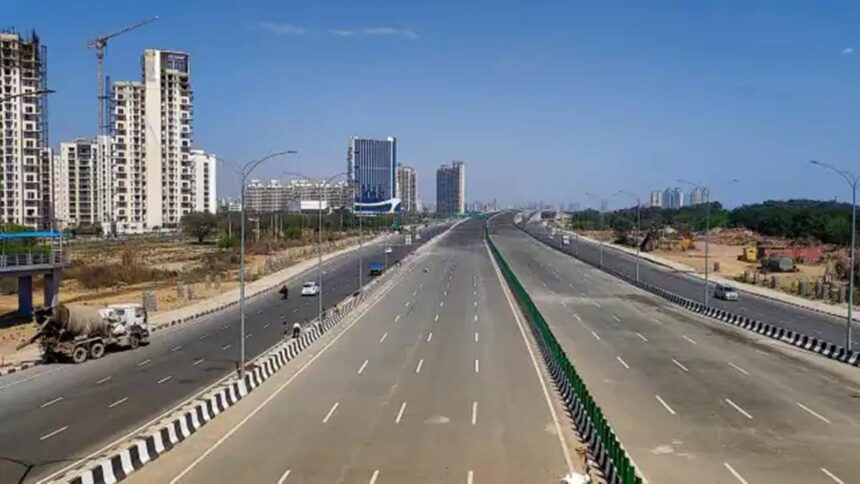In a move aimed at tackling delays and preventing cost escalation in the construction of national highway projects, the Ministry of Road Transport & Highways (MoRTH) has issued a directive mandating stringent adherence to the new deadlines for land acquisition, forest clearance, and wildlife clearance. The directive outlines specific activities and their mandated completion timelines.
The communication, dated May 6, 2025, emphasizes that there is an urgent requirement to synchronize the pre-construction activities with the project approval, award, and the declaration of appointed dates. These new rules are set to be followed for all National Highway projects for which tenders are scheduled to be issued starting from June 1, 2025.
“…in order to avoid delays in the construction of National Highway projects after award and prevent contractual disputes as well as time and cost overruns, there is an urgent requirement to synchronize the project approval, award and appointed date declaration activities with the milestones for land acquisition procedures and environment, forest and wildlife clearances,” reads the communication, addressed to top officials including the Director General (Road Development) and Special Secretary, Roads Wing, MoRTH, the Chairmen of the National Highways Authority of India (NHAI) and the National Highways and Infrastructure Development Corporation Ltd. (NHIDCL) etc.
Historically, delays in obtaining necessary clearances or acquiring the required land after a project has been awarded have been a major contributor to project slowdowns and increased costs.
According to the new directive, the process of Environment Clearance (EC), a fundamental requirement for major infrastructure projects, must now begin on approval of alignment and completed before the receipt of bids for the tender.
Similarly, Wildlife Clearance is also mandated to be completed before the receipt of bids. The process of forest clearance will begin on approval of alignment and will be completed before the issue of Letter of Award (LoA).
For Land Acquisition, often the most complex and time-consuming part of the project, the new milestones specify precise timings for key stages of the process under the National Highways Act, 1956. The notification under Section 3A of the Act, which signifies the intention to acquire land, must be issued within 60 days of the approval of the alignment of the highway project. The notification under section 3D of the act, which is declaration of acquisition, for over 90 percent of the Right of Way (ROW) length or the length of the land reserved for the project should be issued before receipt of bids.
Similarly, the issue of award under Section 3G of the Act, which determines the compensation for the acquired land, must be completed for over 90 percent of the ROW length before the issue of the Letter of Award (LOA).
The directive further mandates that possession of 90 percent of the land reserved for the project must be available to the project authorities post award under Section 3G or the National Highways Act, 1956, on or before the appointed date of the project. This ensures that the contractor has access to most of the site from the very beginning of the construction period.
“Assessment of value and payment for structures should be considered as an integral part of the compensation payment on land acquisition for the purpose of the above milestones,” reads the letter.
Apart from environmental and land acquisition approvals, the directive also addresses the timely clearances of other activities. General Arrangement Drawings (GAD) clearance from Railways and the Inland Waterways Authority of India (IWAI), where applicable, must be completed before the receipt of bids or before the Invitation of bids, respectively.
Similarly, the estimates for Utility Shifting, which involves relocating existing services like power lines, water pipes, or telecommunication cables, must also be finalized based on draft feasibility and completed before the receipt of bids.
In a written response in Lok Sabha on April 3, 2025, Minister of Road Transport and Highways said that there are 683 ongoing projects started since April 1, 2014, that have spilled beyond their original completion schedule, without attaining any of the various stages of project completion.
He further said that the primary reasons for delay in NH projects are issues relating to land acquisition, statutory clearances, utility shifting, encroachment removal, law & order, financial crunch of Contractor, poor performance of Contractor and force majeure events.
“All delayed projects do not face cost escalation. If delay is not attributable to the Contractor, price escalation is paid as per contract conditions, which may or may not result in additional cost, depending upon the final value of price escalation determined on actual completion of project and final settlement of bills. If delay is attributable to the Contractor, damages are imposed and there is no additional cost due to delay,” said Gadkari.








